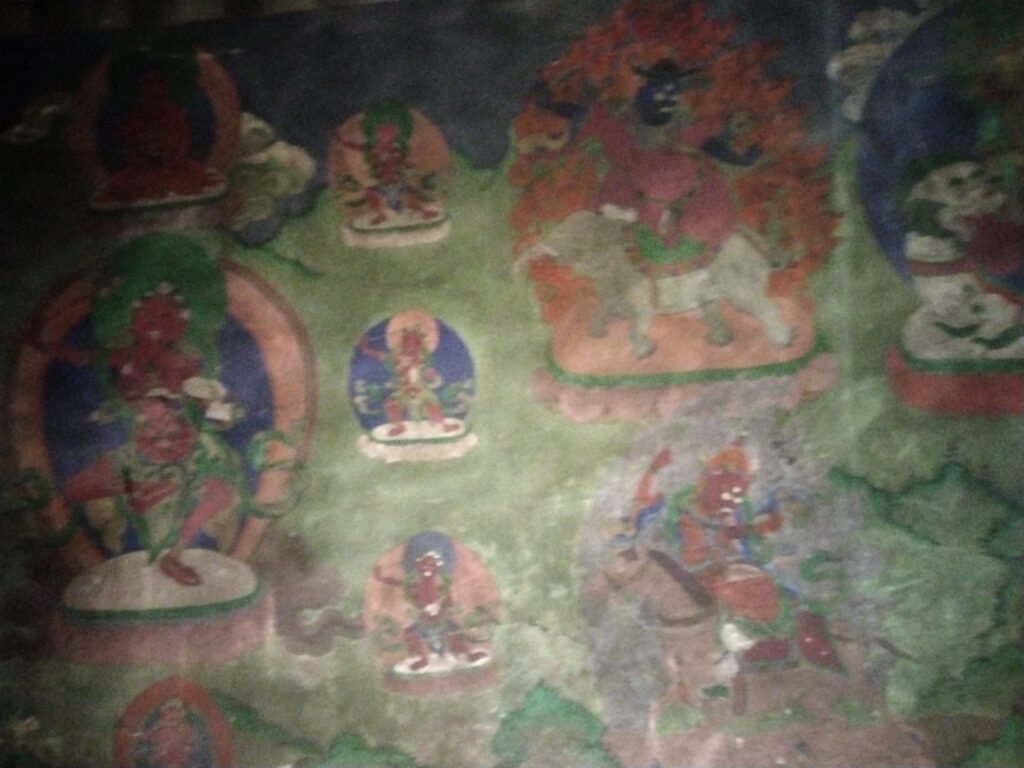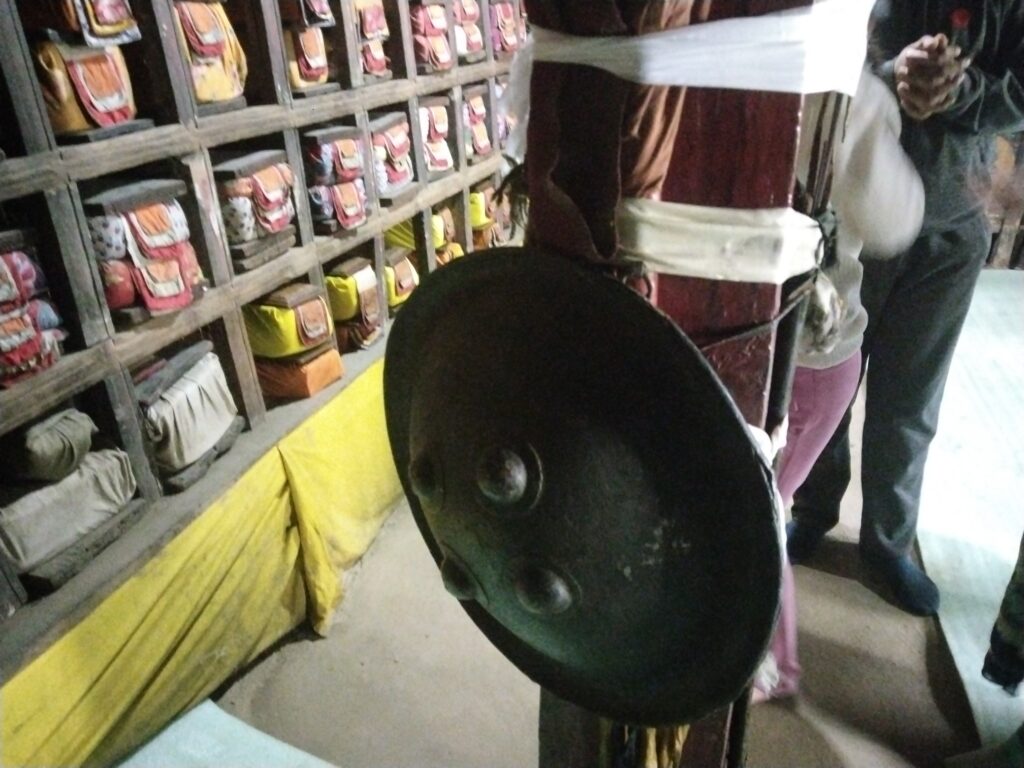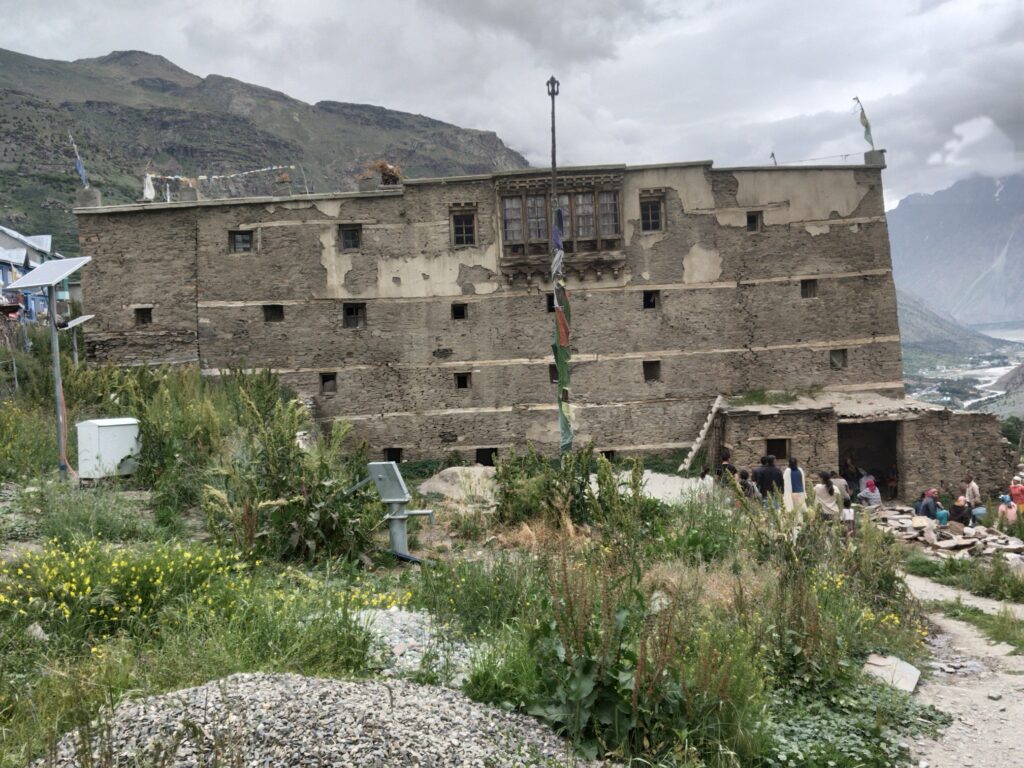Manali: Khangsar literally means “a new home” in Tibetan and is located in the Lahaul Spiti district of Himachal Pradesh. The two hundred years old palace lies at an altitude of 11,500 feet above sea level and is just 15 km from the district headquarter Keylong. Harsh weather conditions and structural damages have left this palace in a bad condition over the past years.

Since its beginning, the palace did serve as a cultural center for the people in Lahaul. It has a beautiful prayer hall towards the Northeast corner on the fourth floor which is still being used by the locals. The main cultural events which used to take place within the palace were the winter and summer Chozdpa festival. Winter Trildapa Chozdpa happened in March and involved a masked dance of Pandavas and the summer Fu Chozdpa happened in August and portrayed the mythical snow lion and its ritualistic dance. To bring life back to this damaged palace, after twenty-five years the Chodzpa festival has been revived by the joint efforts of the local community and NIRLAC. Traditional archery events also happen within the palace premises every winter.


Khangsar is a quick diversion from Keylong although not everyone goes there. It’s always been a center for socio-cultural activities for the locals. Although it’s currently not in good shape, the winter and summer Chozdpa festivals are still organized here. The festivities involve masked dance performances and other rituals. After a gap, the festival has been revived by the joint efforts of the local community and NIRLAC.
Khangsar Khar is a large, multi-storied building that is more than 200 years old. It can be called a castle, fort, or palace, depending on how one looks at it. The structure has 108 rooms and was built for residential purposes. It’s currently not in use but some renovation works are going on.
It was built by one of the most influential families in Lahaul back then. Even when the British occupied the region, they swore loyalty to them and remained de facto rulers in this region around Todh Valley (upper areas of Lahaul northwards of Keylong and towards Jispa). The family originated from nearby Kolong Village.

Influential families in various regions intermarry. Rani Parvati Devi Deskit Wangmo, one of the prominent family members, married into the Ladakhi royal house. Later, she joined politics and became a Member of Parliament. She played an instrumental role in founding the Namgyal Institute for Research On Ladakhi Art and Culture (NIRLAC) a trust established in 1985 to develop research and preserve the culture of Ladakh and adjacent areas such as Lahaul.
The palace is not in use now but some renovations are going on, so, maybe it’ll come back to life in ten future. It overlooks the narrow valley on the banks of the slender river, with giant snowy peaks in the background. A village is built around it and the locals were busy tilling the land with Dzomos.

We climbed up a couple of stairs and found the upper floors with better light and better views through the windows. Nevertheless, the structure, as well as the emptiness reminded me of the iconic Leh Palace, which is also no longer in use. Royals of Ladakh moved to a comparatively newer Stok Palace, including the aforementioned Queen Mother.
Khangsar is located at a short diversion from the Manali Leh highway, around 27 KMs from Keylong, and around 3-4 KMs from the highway. The diversion is easily visible and is somewhere after Stingri but before you reach Gemur. The roads are smooth now and the route is full of hotels and Homestays, so it shouldn’t be an issue.

Sanjay Dutta, an engineer by qualification but is a journalist by choice.
He has worked for the premier new agency Press Trust of India and leading English daily Indian Express.
With more than a decade of experience, he has been highlighting issues related to environment, tourism and other aspects affecting mountain ecology.
Sanjay Dutta lives in a village close to Manali in Kullu valley of Himachal.




